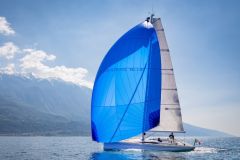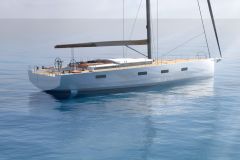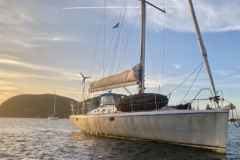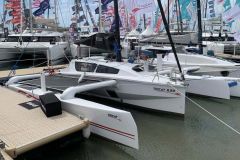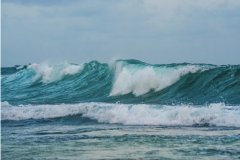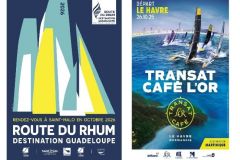The genesis of a project
Gurval Lego is a creative person with a passion for engineering. Anyone who dreamed of being a naval engineer or even a naval architect has been nourished by maritime culture. Born in Brittany, this inventor has always sailed and been lulled by the world of the boat. Today, he has decided to go back to his origins and create a prototype kiteboat for the general public, " a small single-seater that is easy to use but also easy to store and above all not too expensive to be able to democratize the practice of kiteboat because today, almost everyone knows what kiteboarding is, but it's a sport that is still quite elitist. Physically it requires a little bit of fitness and there are still some dangers that are not solved while kiteboating has some advantages that allow you to get over it."
The idea of this kiteboat was born from a simple observation " I come from a maritime culture, I love sailing, I'm from Brittany, I put my buttocks in boats almost before I knew how to walk and it's true that sailing people look at kitesurfing with a slightly curious eye because it's a new way of using the wind but at the same time the principle consists of standing on a board" He then thought of developing a new principle " a boat dragged by a wing, that is to say, something that bridges the gap between the two and that will interest a lot of people". For him, the idea is found, this concept, he is sure, will attract people from both worlds, sailing and sliding, who will enjoy the advantages of one without the disadvantages of the other and vice versa. He has therefore developed a small boat, which has force of transformation has now become a tripod.

The project of a lifetime
The Dared is a bit like the "project of a lifetime" because Gurval has been working on the principle for a very long time, "When I was a kid living in Brest, I was always tinkering with boats, always seeing strange machines, prototype airfoils, boats of different sizes... When you're in them, it's a whole culture that you have." He started working on his project in earnest seven years ago, sketching the first sketches and taking out the first resin pots five years ago. Working as a graphic designer, he spends a few hours here and there on it" Prototyping is above all development and it takes a lot of time. It's a bit longer and harder than copying a blueprint and rebuilding a boat in your own backyard." .
This perfectionist has been working for a long time in search of the ideal boat. At the beginning, he worked on the optimization of traction by kite but he found these ideas not sufficiently accomplished. Finally, he decided to rethink the problem in his own way and to highlight the main characteristics of the boat and that's how the V1 prototype was born "In the end, it's the characteristics of the boat that built it, a bit like in biology with oyster hulls that are built layer by layer to be resistant and well, me, layer by layer I arrived at this principle of a tripod boat."
And ideas, he had some... " In the beginning my project was to beat the speed record on the water but it required a big budget and I quickly realized that going to get budgets is a real job. Either we build boats or we go out and get budgets, but it's quite difficult to do both ."

A model... which is not a model..
Finally, he started building his model and realized that what he considered a simple scale model would also serve as a prototype. After all, he stows himself in the trunk of a car, fits in a small cellar without dismantling himself and the people around him find this "model" rather nice and they would be interested to go and have fun with it. "So I started developing the boat with this vision of something that was easy to use and that would appeal to people in the state it was in and not as a model of a boat that I wanted to be bigger."
Today Gurval has won the innovation and design prize of Eurosima (Grouping of European board sports manufacturers), which organises a major competition every year. " So I've won a small prize which will serve as a budget for me to build a new prototype which will be, say, 95% the marketable boat. And it should be running at 2,015" .

Using crowfunding to finalize your project
Sponsorise-me is a partner of Eurosima and it is in this context that Gurval was contacted to use the platform in order to collect an additional budget to create its project. Being a specialist in sport, it was therefore "everything found".
On this site, Gurval offers to help him to develop his project and why not to obtain one of the first models thanks to his participation" For very big participations, I suggest people have their own boat. If I can get an extra budget, I can start my mini-series and the clients for this one could be the people who gave a big budget. It's a way to support and contribute to the project, but also to get a new product on the market with its name on the boat."
What next?
"I hope that soon there will be people who will have fun with this boat all over France and also elsewhere, even if it is a country particularly well situated for boating." That's all we wish for Gurval Lego and his project Dared!
By the way, why Dared?
Basically Dared is the name of the project, chosen because it has a triple meaning. " First of all, Dared in English is daring, and I liked it because it's quite daring." Then if you break it down, "Da" "Red" is the English contraction of "that red stuff" and finally, " in Breton, dared is a fulguria, a flash of heat, and I thought it suited well for something fast."


